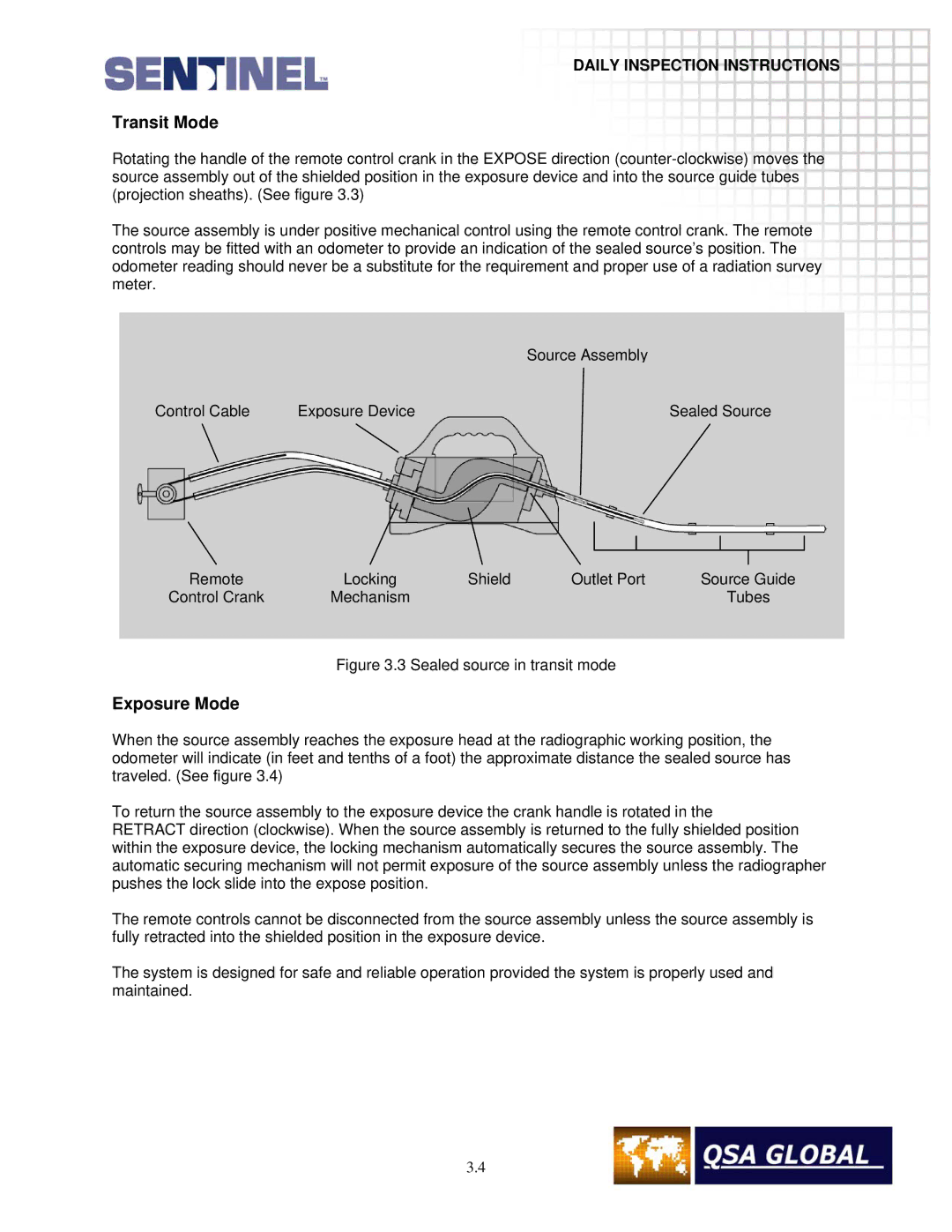
DAILY INSPECTION INSTRUCTIONS
Transit Mode
Rotating the handle of the remote control crank in the EXPOSE direction
The source assembly is under positive mechanical control using the remote control crank. The remote controls may be fitted with an odometer to provide an indication of the sealed source’s position. The odometer reading should never be a substitute for the requirement and proper use of a radiation survey meter.
Source Assembly
Control Cable | Exposure Device | Sealed Source |
Remote | Locking | Shield | Outlet Port | Source Guide |
Control Crank | Mechanism |
|
| Tubes |
Figure 3.3 Sealed source in transit mode
Exposure Mode
When the source assembly reaches the exposure head at the radiographic working position, the odometer will indicate (in feet and tenths of a foot) the approximate distance the sealed source has traveled. (See figure 3.4)
To return the source assembly to the exposure device the crank handle is rotated in the
RETRACT direction (clockwise). When the source assembly is returned to the fully shielded position within the exposure device, the locking mechanism automatically secures the source assembly. The automatic securing mechanism will not permit exposure of the source assembly unless the radiographer pushes the lock slide into the expose position.
The remote controls cannot be disconnected from the source assembly unless the source assembly is fully retracted into the shielded position in the exposure device.
The system is designed for safe and reliable operation provided the system is properly used and maintained.
3.4
